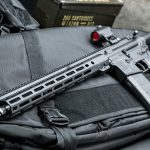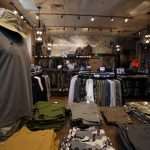Moody’s said Wolverine’s revenue declines and margin compression have been driven by elevated inventory and retailer de-stocking in the footwear category, as well its own inventory and product management missteps. Moody’s-adjusted debt/EBITDA was 8.5x as of Q2 2023 (including standard adjustments for operating leases, pensions, and the accounts receivable securitization program) and EBITA/interest expense was 1.6x. Moody’s expects debt/EBITDA to decline to the mid-7x by year-end 2023 driven by revolver paydown with free cash flow and proceeds from planned asset sales. In 2024, Moody’s projects leverage to decline to 5x, reflecting earnings recovery from lower freight costs, reduced clearance activity and cost reduction measures. Moody’s said, “Execution risk remains high despite accelerated actions by Wolverine’s new executive leadership to deliver the balance sheet, improve processes and technology and invest in its core growth brands.”
Ratings affected include the corporate family rating (CFR) to B1 from Ba3, probability of default rating (PDR) to B1-PD from Ba3-PD, and senior unsecured global notes rating to B3 from B1.
The speculative grade liquidity (SGL) rating was downgraded to SGL-3 from SGL-2, reflecting increased risks to cash flow generation as the company looks to generate significant cash from reducing inventory in an uncertain macroeconomic environment and pursue material asset sales to support debt repayment.
The downgrades also reflect governance considerations, including the company’s historical focus on share repurchases and acquisitions, which together with weak operational execution in the face of a tough retail environment have weakened its credit metrics and liquidity. Wolverine’s credit impact score was lowered to CIS-4 from CIS-3 as a result of its governance score being lowered to G-4 from G-3. The change in the governance score to G-4 from G-3 is related to its financial strategy.
The outlook remains negative, reflecting the risk to earnings and cash flow from weak consumer spending and a highly promotional environment, which may prevent Wolverine from improving its credit metrics to a level that is appropriate for the B1
Wolverine’s portfolio includes Bates, Cat Footwear, Chaco, Harley-Davidson Footwear, Hush Puppies, Hytest, Merrell, Saucony, Sperry, Stride Rite, Sweaty Betty and Wolverine.
Moody’s said in its analysis, “Wolverine’s B1 CFR benefits from its diversified global distribution in the footwear industry and a product portfolio that appeals to a broad range of consumer needs and demographics, which has historically mitigated earnings volatility. The rating also reflects its ownership of Merrell and Saucony, which are well-recognized and differentiated brands representing around 50 percent of sales. Although execution risk remains high and the macroeconomic environment uncertain, Wolverine’s credit profile is expected to improve significantly upon successful execution of its goals for streamlining costs, selling weaker brands and investing in its core brands to maximize their growth and margin potential. Moody’s expects the company to have adequate liquidity for the next 12-18 months, reflecting expectations for positive free cash flow driven by inventory reduction, lack of near-term debt maturities, good excess revolver availability, and adequate covenant cushion.
“Wolverine’s ratings are constrained by its high leverage and narrow product focus primarily in the fashion-sensitive footwear segment. Many of its brands have relatively low direct-to-consumer penetration, which limits the company’s ability to leverage consumer insights. These brands also have a small revenue scale in highly competitive categories. While Wolverine is prioritizing debt reduction, its past decisions have contributed to high leverage levels, including funding the Sweaty Betty acquisition with revolver borrowings in Q3 2021 and continuing share repurchases through Q2 2022, instead of paying down debt. Wolverine is also subject to social and environmental risks related to responsible sourcing, waste and pollution including PFAS remediation and litigation, the treatment of workforce, natural capital and customer relations.”
Photo courtesy WWW
















